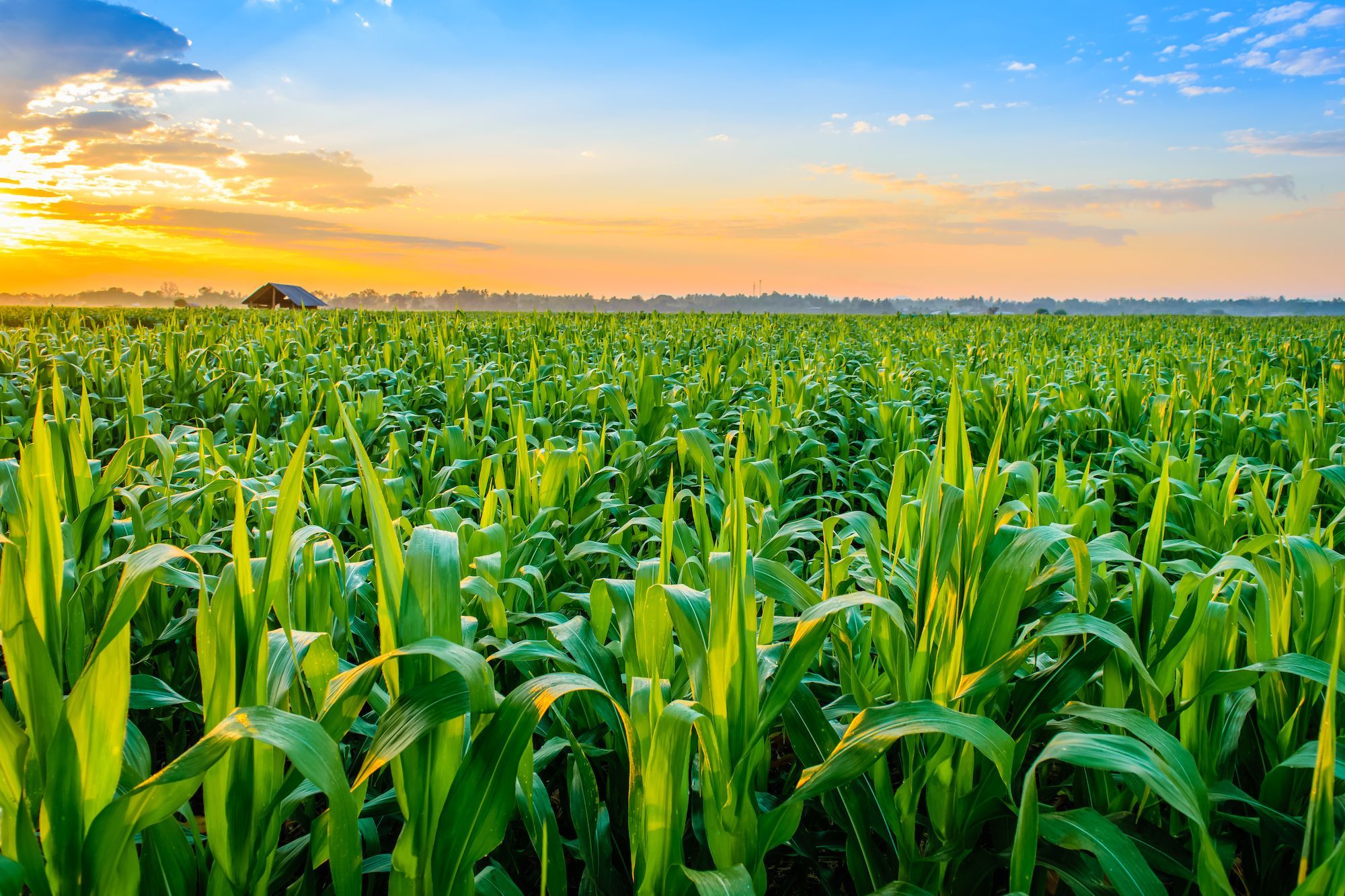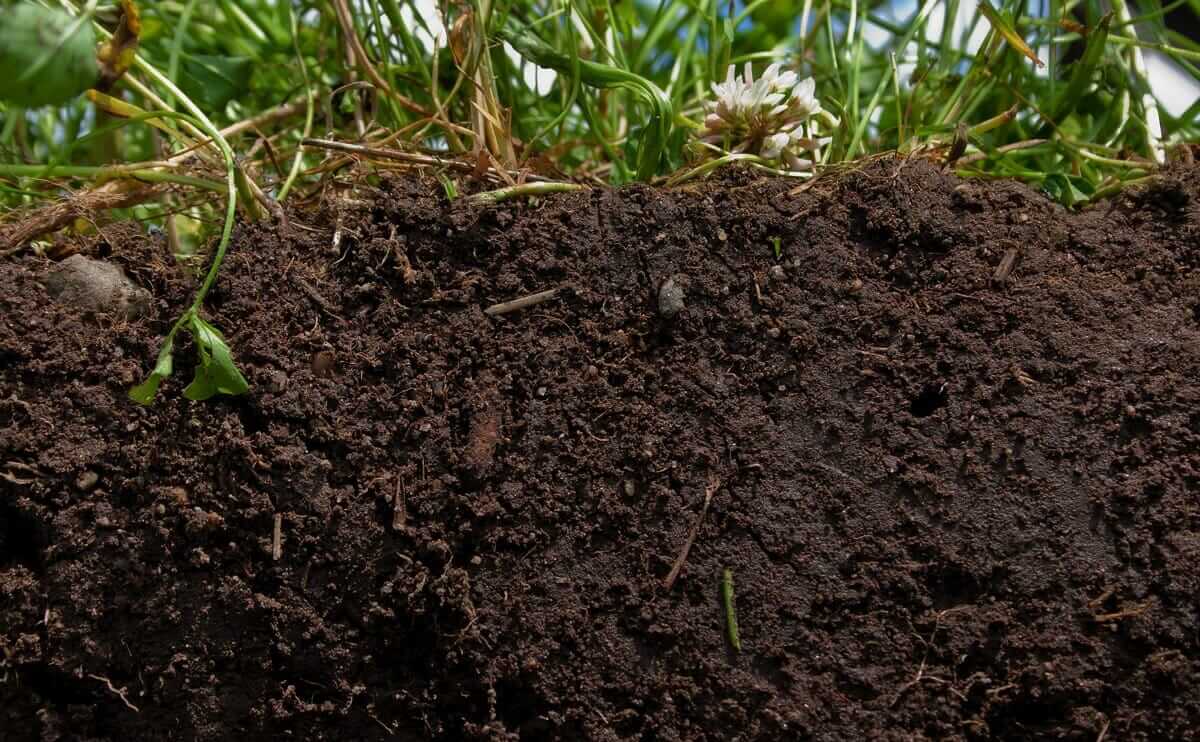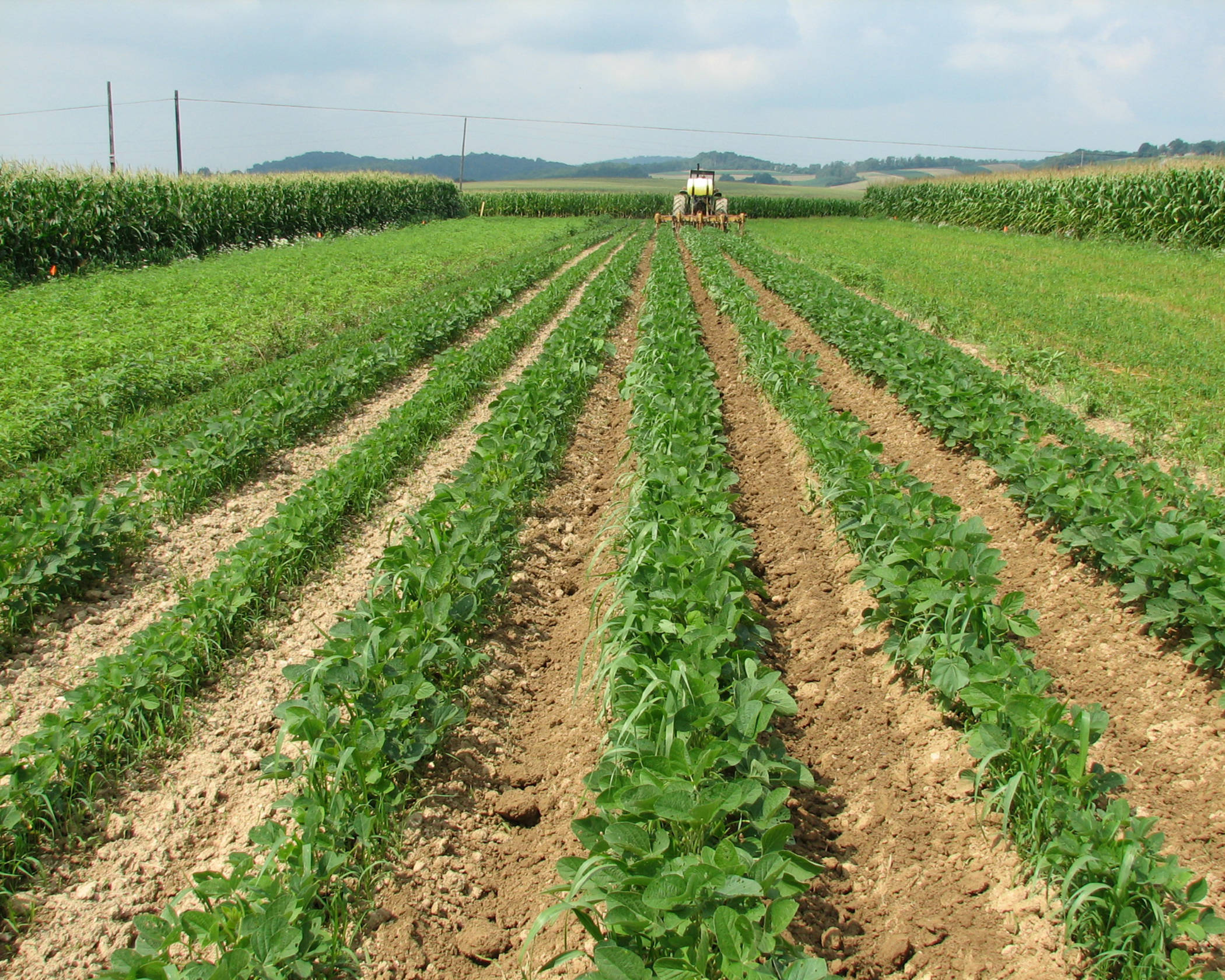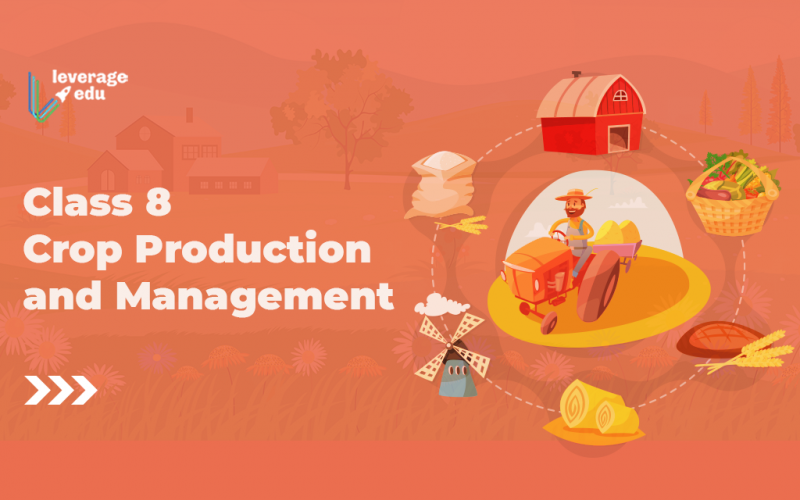Crop Production and Management is chapter 1 of the class 8 science NCERT book. Being an informative chapter it explains how and what type of crop is produced and how it is managed. The students would sure enjoy knowing where the food they eat comes from. In this blog, we will read the notes on Class 8 Crop Production and Management.
Download the NCERT PDF for Class 8 Crop Production and Management.
This Blog Includes:
Brief Notes on the Chapter
Food is very important for us and we get it from plants and animals since we cannot make our own food like the plants that synthesize their own food. It provides us energy to do our chores and survive. In order to provide food for a large population as our county’s regular production, proper management and distribution is necessary and we will learn all about it in this chapter of Class 8 Crop Production and Management
Agricultural Practices of Class 8 Crop Production and Management
Till 10,000 B.C.E. people were nomadic which means wandering in groups from place to place in search of food and shelter. They ate raw fruits and vegetables and started hunting animals for food and later when they could cultivate land and produce rice, wheat and other food crops was born Agriculture.
Crop
Cultivating the same kind of plants at one place on a large scale is called cultivating crops. And these plants are called crops. For example, a crop of wheat means that all the plants grown in a specific field are wheat.

These crops can be classified on the basis of the season in which they are grown. India being a vast country has varied climate conditions like temperature, humidity and rainfall which affect the plant growth of that place. There are 2 main patterns of crops which are –
Kharif Crops
The crops sown in the rainy season which is generally from June to September are called Kharif crops. Examples of Kharif crops are – Paddy, maize, soybean, groundnut and cotton etc.
Rabi Crops
The crops grown in the winter season which is from October to March are called rabi crops. Examples of rabi crops are wheat, gram, pea, mustard and linseed etc.
Besides these crops, pulses and vegetables are also grown during summer at many places.
Read Notes On:
- Class 8 Materials Metals and Non-metals
- Class 8 Reaching the Age of Adolescence
- Class 8 Pollution of Air and Water
- Class 8 Light
Basic Practices of Crop Production
Cultivation of crops involves several activities undertaken by farmers over a period of time and these activities are referred to as agricultural practices which are listed below –
Preparation of Soil
It is the first step before growing a crop and is one of the most important tasks in agriculture. The turning of the soil and loosening it allows the roots to penetrate deep into the soil and breathe easily even when they go deep into the soil. The loosened soil also helps in the growth of earthworms and microbes present in the soil which further turn and loosen the soil and add humus to it.

Tilling or Ploughing
Only a few centimetres of the top layer of soil supports plant growth therefore turning and loosening of soil brings the nutrient-rich soil to the top so that the plants can use these nutrients. This process of loosening and turning the soil is called tilling or ploughing. It is done by using a plough which is made of wood or iron. If the soil is very dry it may need some watering before ploughing.
Crumbs
The ploughed field may have big clumps of soil which are called crumbs. It is necessary to break these crumbs because leveling the field is beneficial for sowing as well as for irrigation and it is done with the help of a leveler. Sometimes manure is also added to the soil before tilling which helps in proper mixing of manure with soil. The soil is also moistened before sowing. So now you know that the preparation of the soil is based on the condition of the soil.

Agricultural Implements Used in Soil Preparation
Plough
It has been used since ancient times for tilling the soil, adding fertilizers to the crop, removing the weeds and for turning the soil. This is made of wood and is drawn by a pair of bulls or any other animals. It contains a strong triangular iron strip called ploughshare and it’s main part is a long log of wood which is called a ploughshaft. There is a handle at one end of the shaft and the other end is attached to a beam that is placed on the bulls’ necks. One pair of bulls and a man can easily operate the plough but these indigenous wooden ploughs are increasingly being replaced by iron ploughs nowadays.
Hoe
It is a simple tool that is used for removing weeds and loosening the soil. It has a long rod of wood or iron with a strong, broad and bent plate of iron fixed to one of its ends and works as a blade. It is also pulled by animals.
Cultivator
Nowadays this process of ploughing is done by tractor-driven cultivators. The use of a cultivator saves labour and time for the farmers.
Sowing
Before sowing good quality, clean and healthy seeds of a good variety—are selected because farmers prefer to use seeds that give high yield and therefore high profit too. Selection of Seeds is important because damaged seeds become hollow and do not grow properly giving poor yield.

Tools for Sowing Seeds
The tools used for sowing seeds are of 2 types –

Traditional Tools
The tools which have been used traditionally for sowing seeds are generally shaped like a funnel. The seeds are filled into the funnel, passed down through two or three pipes that have sharp ends which pierce into the soil and place seeds there.
Modern Tools
Nowadays the seed drill is used for sowing with the help of tractors. It sows the seeds uniformly at equal distance and depth and also ensures that seeds get covered by the soil after sowing. This protects seeds from being eaten by birds. Appropriate distance between the seeds is necessary to avoid overcrowding of plants which allows plants to get sufficient sunlight, nutrients and water from the soil.
Read Notes On:
- Stars and Solar System Class 8
- Class 8 Force and Pressure
- Cell Structure and Function Class 8
- Class 8 Combustion and Flame
Manure and Fertilizers
The substances added to the soil in the form of nutrients for the healthy growth of plants are called manure and fertilizers. Soil generally supplies mineral nutrients to the crop plants. These nutrients are essential for the growth of plants but in certain areas farmers grow crop after crop in the same field and this continuous cultivation of crops makes the soil poor in nutrients. Therefore manure is added to the fields to replenish the soil with nutrients. This process is called manuring. Improper or insufficient manuring may result in weak plants.
Manure is an organic substance obtained from the decomposition of plant or animal wastes which is dumped into pits at open places and allowed to decompose.
Fertilizers are chemicals which are rich in a particular nutrient. They are produced in factories and some examples of fertilizers are— urea, ammonium sulphate, super phosphate, potash, NPK (Nitrogen, Phosphorus, Potassium). The use of fertilizers helps farmers to get better yields of crops such as wheat, paddy and maize.
Difference Between Manure and Fertilizers
Manure is organic whereas fertilizers are made in factories. Manure enhances the water holding capacity of the soil, replenishes nutrients, makes it porous, increases the number of friendly microbes and also improves the texture of the soil. Excessive use of fertilizers makes soil less fertile and causes pollution. Therefore it is important to substitute fertilizers with organic manure or leave the field fallow between 2 crops.
Crop Rotation

It is growing different crops alternately. Earlier farmers in northern India used to grow legumes as fodder in one season and wheat in the next season which helped in the replenishment of the soil with nitrogen. Farmers are again being encouraged to adopt this practice. Rhizobium bacteria are present in the nodules of roots of leguminous plants and they help fix atmospheric nitrogen in the soil. This method can also be used for replenishing the nutrients in the soil.
Irrigation
Plants contain nearly 90% water. Water is absorbed by the plant roots and along with it minerals and fertilizers are also absorbed and it is essential for the germination of seeds which cannot take place under dry conditions. Water protects the crop from both frost and hot air currents so to maintain the moisture of the soil for healthy crop growth the fields have to be watered regularly. The supply of water to crops at regular intervals is called irrigation. The time and frequency of irrigation vary from crop to crop, soil to soil and season to season. In summer, the frequency of watering is higher as compared to other seasons.
Traditional Methods of Irrigation
The water available in wells, lakes and canals is lifted up by different methods in different regions for taking it to the fields. Cattle or human labour is used in these methods so these methods are cheaper but less efficient. The various traditional ways are – moat (pulley-system), chain pump, dhekli and Rahat (Lever system). Pumps are commonly used for lifting water and diesel, biogas, electricity and solar energy is generally used to run these pumps.
Modern Methods of Irrigation
The modern methods of irrigation in Class 8 Crop Production and Management are:
- Sprinkler System– This system is more useful on the uneven land where sufficient water is not available and in this perpendicular pipes having rotating nozzles on top are joined to the main pipeline at regular intervals. When water is allowed to flow through the main pipe under pressure with the help of a pump it escapes from the rotating nozzles and gets sprinkled on the crop as if it is raining. Sprinkler is very useful for lawns, coffee plantation and several other crops.
- Drip system– The waterfalls are used to send water drop by drop directly near the roots so it is called drip system. It is the best technique for watering fruit plants, gardens and trees. Water is not wasted at all.
Read Notes On:
- Coal And Petroleum Class 8 Notes
- Conservation of Plants and Animals Class 8 Notes
- Notice Writing for Class 8
Protecting From Weeds
In a field many other undesirable plants may grow naturally along with the crop and these undesirable plants are called weeds. The removal of weeds is called weeding and it is necessary since weeds compete with the crop plants for water, nutrients, space and light affecting the growth of the crop. Some weeds interfere in harvesting and may be poisonous for animals and human beings.
Farmers adopt many ways to remove weeds and control their growth some of which are given here –
- Tilling before sowing of crops helps in uprooting and killing of weeds which then dry up and get mixed with the soil. The best time for the removal of weeds is before they produce flowers and seeds.
- The manual removal includes physical removal of weeds by uprooting or cutting them close to the ground from time to time; it is done with the help of a khurpi.
- A seed drill is also used to uproot weeds.
- Weeds are also controlled by using certain chemicals called weedicides. These are sprayed in the fields to kill the weeds after being diluted with water to the extent required and sprayed in the fields with a sprayer. Spraying of weedicides may affect the health of farmers so they should use these chemicals very carefully and cover their nose and mouth with a piece of cloth during spraying of these chemicals.
Harvesting
The cutting of crops after it is mature is called harvesting. In harvesting, the crops are pulled out or cut close to the ground which usually takes 3 to 4 to mature. Harvesting is either done manually by sickle or by a machine called a harvester. The process of grain seeds being separated from the chaff in a harvested crop is called threshing and is carried out with the help of a machine called ‘combine’ which is in fact a harvester as well as a thresher. Farmers with small holdings of land do the separation of grain and chaff by winnowing as well. The period of harvest is of great joy and happiness in all parts of India. Everyone celebrates it with great enthusiasm. Special festivals are also associated with the harvest season and they are – Pongal, Baisakhi, Holi, Diwali, Nabanya and Bihu.
Storage
If the harvested grains are to be kept for a long time they should be safe from moisture, insects, rats and microorganisms and stored properly. Harvested grains have more moisture and if it is stored without drying it will get spoiled or attacked by organisms, making them unfit for use or for germination. Hence before storing them the grains are properly dried in the sun to reduce the moisture in them which prevents the attack by insect pests, bacteria and fungi.
Farmers store grains in jute bags or metallic bins however large scale storage of grains is done in silos and granaries to protect them from pests like rats and insects and dried neem leaves are used for storing food grains at home. For storing large quantities of grains in big godowns specific chemical treatments are required to protect the grains from pests and microorganisms.
Also Read:
- List of NCERT Books Class 8
- NCERT Class 8 Maths Syllabus
- Class 8 English
- NCERT Class 8 SST Syllabus
- Class 8 Science
Food from Animals
Other than plants we get from animals as well. Many people living in the coastal areas consume fish as a major part of their diet, other products like eggs, milk, meat are also obtained from animals. Similar to how plants are sown and taken care of animals reared at home or in farms have to be provided with proper food, shelter and care as well. This is done on a large scale; it is called animal husbandry. Examples of animal husbandry are poultry farms, fish tanks etc.
FAQs
Cultivating the same kind of plants at one place on a large scale is called crop production. And these plants are called crops. For example, the crop of wheat means that all the plants grown in a specific field are of wheat.
There are about 7 basic principles of crop production which include preparation of soil, sowing, adding manure and fertilizers, irrigation, weeding, harvesting and proper storage. All these processes are explained in detail above.
The systematic watering of plants in a large field is called irrigation. The management of water and irrigation can be done in 2 ways which are either traditional or modern methods. Both these methods are explained in detail above.
This was all about crop production and its management. Hope these notes and extra questions will help you in understanding and revision of your chapter. For help with this chapter or other chapters or other subjects check out our other blogs at Leverage Edu.
-
Very helpful ☺️👍
-
Thanks for reading!
Also read: Ruling the Countryside Class 8 Notes
The Making of National Movement Class 8
India After Independence Class 8
-
-
You People have Greatly Explained
-
Thanks for reading!
Also, read: Ruling the Countryside Class 8 Notes
The Making of National Movement Class 8
-

 One app for all your study abroad needs
One app for all your study abroad needs





















 45,000+ students realised their study abroad dream with us. Take the first step today.
45,000+ students realised their study abroad dream with us. Take the first step today.


5 comments
Very helpful ☺️👍
Thanks for reading!
Also read: Ruling the Countryside Class 8 Notes
The Making of National Movement Class 8
India After Independence Class 8
You People have Greatly Explained
Thanks for reading!
Also, read: Ruling the Countryside Class 8 Notes
The Making of National Movement Class 8
It is the best. Thanks